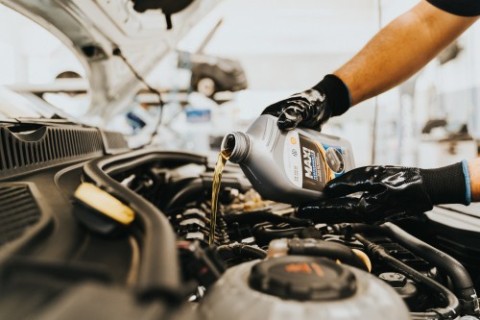Few names in the world of automotive performance are as significant as “SRT” in the Dodge portfolio. These three letters stand for the promise of thrilling power, precise engineering, and unwavering performance to enthusiasts and speed fanatics. SRT, which has its roots in Chrysler/Dodge’s Street & Racing Technologies business, has established a reputation for pushing the envelope of what is feasible on the road and at the racetrack. Investigating the meaning and significance of SRT in Dodge cars reveals that the designation represents more than simply a moniker; it represents a mentality that celebrates the joy of the drive and is dedicated to engineering excellence. Together, we will attempt to unravel the mystery behind SRT and investigate its long-lasting influence on the automotive industry.
Understanding the Origins of SRT (Street & Racing Technology):
Formation of the SRT Division:
- Chrysler Corporation realized it needed a dedicated high-performance car division in the late 1980s.
- To meet this need, the Performance Vehicle Operations (PVO) branch was founded in 1989.
Evolution into SRT:
- Over time, the PVO business underwent changes that led to the establishment of the Street & Racing Technology (SRT) division in 2002.
- A more concentrated approach to both street and track performance was indicated by the switch to SRT.

Mission and Vision:
- When SRT was established, its goal was to build cars that performed well in both everyday driving and competitive situations.
- The idea was to combine state-of-the-art technology and street-legal cars to provide aficionados with unmatched performance.
Early Projects and Collaborations:
- Early SRT initiatives included joint ventures with Dodge, Chrysler, and Jeep to improve the performance of current models.
- Two notable examples of early partnership vehicles are the Dodge Viper and the Dodge Neon SRT-4.
Innovative Engineering and Design:
- The engineers at SRT concentrated on expanding the frontiers of automobile engineering and creating innovative technology to maximize efficiency.
- This included improvements to suspension systems, aerodynamics, engine tuning, and general vehicle dynamics.
Racing Heritage:
- Its participation in motorsports, including road courses, drag racing, and NASCAR, demonstrated SRT’s roots in racing technology.
- SRT’s innovations were tested in racing, where insights gained on the track were applied to better production vehicles.
Consumer Impact:
- When SRT models were introduced, car enthusiasts paid close attention because they valued the combination of utility and performance.
- SRT cars gained a devoted following amazingly fast, which aided in the expansion of the enthusiast and performance aftermarket sectors.
Expansion and Influence:
- Over time, SRT collaborated with other brands under the Fiat Chrysler Automobiles (FCA) umbrella, extending its influence beyond Dodge.
- From muscle cars to SUVs, the SRT concept inspired the creation of performance-oriented automobiles in a variety of market sectors.
Legacy and Recognition:
- The contributions SRT made to the automotive performance culture—which redefined the parameters of speed, agility, and driving excitement—are what define its legacy.
- The SRT emblem has come to represent unwavering performance, winning the respect and admiration of both critics and aficionados.
Unpacking the Significance of SRT:
Defining SRT:
- The acronym SRT, which stands for Street & Racing Technology, is a high-performance vehicle-focused specialized division of Dodge (previously Chrysler).
- It stands for dedication to advancing automotive engineering’s frontiers to provide unmatched driving experiences.
Performance Focus:
- Performance is the focus of SRT models’ engineering, which combines power, agility, and precision to produce thrilling driving characteristics.
- Every part, from the suspension to the engine, is finely adjusted to maximize performance on the racetrack and the street.
Technological Innovation:
- Modern engineering and innovative technology are featured in SRT vehicles to optimize performance.
- SRT Engineering is known for its innovations in high-output engines, sophisticated aerodynamics, adaptive suspension systems, and performance-enhancing electronics.
Heritage and Racing Pedigree:
- The SRT division uses its racing history as inspiration and gains knowledge from the racecourse to improve its production of cars.
- The spirit of competition and performance excellence instilled in SRT automobiles by their racing heritage sets them apart from other production vehicles.
Distinctive Design and Branding:
- SRT cars are distinguished from other Dodge models in the range by unique design cues and branding components.
- Bold accents, aggressive appearance, and distinctive badging all point to the SRT cars’ exceptional performance.
Enthusiast Following:
- A devoted enthusiast base has grown around SRT because of the brand’s unwavering performance reputation.
- Owners of SRT models are passionate and devoted to their vehicles because they enjoy the rush of operating a car designed for peak performance.

Benchmark Performance Metrics:
- SRT cars regularly establish industry standards for performance measurements in their classes thanks to their remarkable braking, handling, and acceleration qualities.
- These accomplishments bolster SRT’s standing as a pioneer in the high-performance car sector.
Accessible Performance:
- Even though SRT models perform like supercars, they are nevertheless available to a wider variety of enthusiasts than exclusive hyper cars.
- A wider range of people are now drawn to SRT cars thanks to the democratization of high-performance driving experiences.
Continuous Evolution:
- Because of SRT’s dedication to innovation, its cars are always changing to include the newest developments in engineering and technology.
- Every new generation of SRT cars sets the standard for performance and driving excitement because of this commitment to advancement.
Cultural Impact:
- Beyond the world of cars, SRT has an impact on popular culture and engenders a spirit of adventure and excitement in enthusiasts.
- Due to its iconic position and stellar performance history, the brand has become a global cultural touchstone for auto fans.
Exploring the Legacy of SRT Models:
Introduction to SRT’s Impact:
- The automotive industry has been forever changed by SRT (Street & Racing Technology) models, which have redefined the limits of engineering brilliance and performance.
- SRT vehicles have left a lasting impact on the automotive industry, setting new benchmarks for speed, power, and agility in everything from muscle cars to SUVs.
Muscle Car Icons:
- The history of SRT is intricately linked to legendary muscle vehicles like the Dodge Charger and Challenger.
- Reviving the tradition of the American muscle vehicle, models such as the Charger SRT Hellcat and Challenger SRT Hellcat are admired for their incredible horsepower and lightning-fast acceleration.
Supercar Slaying Performance:
- SRT vehicles are known for challenging exotic supercars at a significantly lower price.
- Automobiles such as the Dodge Viper SRT-10 stunned aficionados with their unadulterated power and performance tailored for the racetrack, demonstrating that American muscle could contend with rivals worldwide.
Innovations in SUV Performance:
- Beyond classic muscle cars, SRT has influenced the development of high-performance SUVs such as the Jeep Grand Cherokee SRT.
- These SUVs offer enthusiasts who want versatility without sacrificing performance new options by fusing the utility of an SUV with the performance capabilities usually associated with sports cars.
Record-Breaking Achievements:
- SRT models have established themselves as industry standards by continuously shattering performance records.
- SRT cars have proven their superiority in a range of performance parameters, from dominating the drag strip to setting top speed records on the Bonneville Salt Flats.
Enduring Enthusiast Following:
- Among enthusiasts, SRT models have developed a fervent and devoted fanbase since they value the brand’s unwavering dedication to performance.
- Owners of SRT cars create close-knit groups on social media, forums, and events where they share their passion for these powerful automobiles.
- Legacy of Innovation: The legacy of SRT extends beyond only power and speed; it also includes pushing the limits of automotive technology.
- The company’s achievements in performance electronics, aerodynamics, and engine design have opened doors for the automotive industry.
Continued Influence and Evolution:
- Even though certain SRT models have been discontinued, Dodge’s current portfolio still embodies innovation and performance perfection.
- Future generations of automotive enthusiasts will be inspired by SRT’s history as it continues to grow through new revisions of famous vehicles and the introduction of innovative technologies.

Evolution of SRT Technology and Innovation:
Introduction to SRT’s Technological Evolution:
- As a leader in automotive innovation, SRT (Street & Racing Technology) has never stopped pushing the envelope on engineering prowess and performance.
- SRT has developed innovative technology throughout the years to improve the handling, performance, and overall driving characteristics of the vehicle.
Advanced Powertrains:
- Some of the most powerful powertrains in the automobile industry have been fitted to SRT vehicles.
- From massive V8 supercharged engines to turbocharged powerplants, SRT is always looking for new methods to maximize power and efficiency without sacrificing dependability and drivability.
Innovative Aerodynamics:
- To improve performance and stability at high speeds, aerodynamics is essential.
- SRT has created cutting-edge aerodynamic packages, such as underbody diffusers, rear spoilers, and front splitters, to maximize airflow and lower drag, enhancing cornering and straight-line performance.
Performance Tuning and Calibration:
- The responsiveness and agility of SRT cars are clear testaments to their proficiency in performance tuning and calibration.
- SRT engineers carefully adjust suspension settings, transmission ratios, and engine specifications to provide the best possible driving experience with unmatched performance and driver involvement.
Adaptive Suspension Systems:
- Adaptive suspension systems, seen in SRT models, dynamically modify damping rates in response to driver inputs and driving circumstances.
- These technologies strike a compromise between performance and comfort, enabling SRT cars to provide a comfortable ride for everyday commuting while maintaining composure and poise under fast driving conditions.
Integrated Performance Electronics:
- SRT cars have high-tech performance electronics installed to improve performance and safety.
- Launch control, traction control, and stability control are examples of technologies that seamlessly combine to maximize traction, acceleration, and stability so drivers can confidently get the most out of their cars.
Braking and Handling Enhancements:
- High-performance brake systems on SRT vehicles are built to deliver reliable stopping power and fade resistance in challenging circumstances.
- Furthermore, accurate handling and turning abilities are ensured by sophisticated chassis tuning and suspension geometry optimizations, enabling SRT vehicles to easily handle the most difficult road and track conditions.
Integration of Advanced Driver Assistance Systems (ADAS):
- SRT keeps adding innovative driver-aid technologies to its cars while maintaining performance levels, hence improving safety.
Frequently asked questions:
Which is superior, RT or SRT?
Though RT is better for live events and SRT is better for pre-recorded content, there isn’t a clear winner between the two; rather, it all depends on the situation.
Are Hellcat and SRT equivalent?
The terms Hellcat and SRT are not interchangeable; Hellcat refers to high-performance versions seen in some Dodge vehicles, whilst SRT (Street & Racing Technology) refers to a wider variety of high-performance cars and parts sold by Fiat Chrysler Automobiles.
Is GT slower than SRT?
Not always; whereas SRT versions are made to be extremely fast, a GT model’s slowness varies depending on its unique characteristics and intended usage.
Is an SRT a super vehicle?
A car with an SRT (Street & Racing Technology) badge is usually very powerful, but it’s not always a supercar; it all depends on the model and its specifications.
Conclusion:
To sum up, the development of SRT (Street & Racing Technology) has been characterized by an unwavering quest for automotive superiority. From the beginning to the present, SRT has consistently pushed the limits of technological innovation. SRT vehicles give an exhilarating driving experience that captures the attention of enthusiasts and raises the bar for performance and excitement thanks to their innovative powertrains, aerodynamics, suspension systems, and integrated electronics. SRT’s tradition of performance prowess will surely live on as it develops further, exciting upcoming generations of car enthusiasts.

